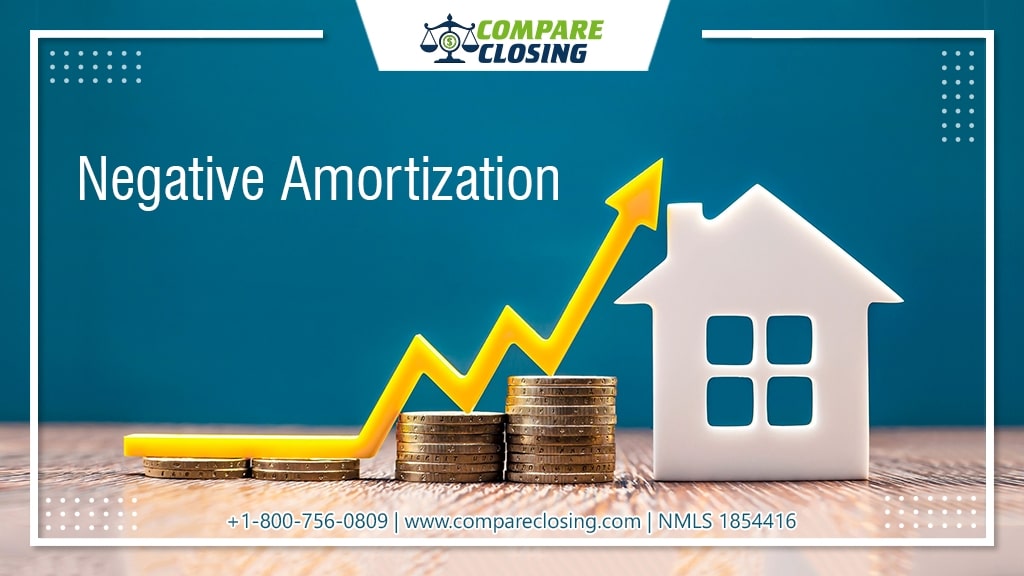Table of Contents
- What Are Netting Escrows & How Does It Work?: The Best Guide - January 2, 2024
- The Secret About Prescriptive Easement: Top Guide 1 Must Know - December 4, 2023
- About Home Equity Loans In Texas And How Can One Obtain It - November 27, 2023
About Negative Amortization
When you take a mortgage, your monthly mortgage payments are set up based on amortization.
In regular amortization every payment that you make, your principal balance goes down.
However, there are some instances where your principal balance may go up in a term known as negative amortization. In this post, we will understand what is negative amortization definition and how it works.
What Is Negative Amortization?
In a regular amortization loan, the borrower makes the monthly mortgage payment including principal and interest.
With every payment made the principal balance goes down and eventually the mortgage is paid off over the tenure of the loan.
However, in a negative amortization loan, the principal amount or the original borrowed amount goes up.
How Does The Negative Amortization Work?
It usually works with payment option adjustable-rate mortgages where the borrower has a cap on the interest amount paid in case the interest rate increases.
If the interest rate increases, the borrower can make a minimum interest amount payment according to the cap.
The rest of the interest amount gets added back to the principal balance increasing the original amount that you borrowed.
This will increase the monthly mortgage payment for the borrower and in some cases could owe more than what the property is worth.
In another case, if the borrower is unable to make a payment and the lender is due to any financial hardship, the lender can offer a deferment option where the borrower can stop making the payment of the loan for some sometime.
By doing that the lender will accumulate the interest rate and add it to the outstanding mortgage balance.
This will increase the principal amount and the borrower will be making higher monthly payments compared to standard payments.
An example of Negative Amortization is Jane taking a mortgage of $200,000 for 30 years to buy a new property at an interest rate of 5.5%.
According to the mortgage agreement she is allowed to make a minimum payment of $800 for a certain period of 30 years.
After that period is over, she needs to make regular payments of $916.67.
Due to some financial hardship, she only opts to pay the $800 instead of $916.67 as per the mortgage agreement.
This means that she is making $116.67 less towards the interest every month. This deficit interest amount is added to the principal balance of $200,000 by the lender and for the next repayment cycle, the new principal balance would be $200,116.
The Pros and Cons of Negative Amortization
Pros of Negative Amortization:
These mortgages give you time to restructure your finances if you are unable to pay the interest amount according to the mortgage agreement due to financial hardship.
This option helps you to stall your payments for some time in case of difficult times so that you can avoid going through the foreclosure procedure.
Cons of Negative Amortization :
These loans come with greater risks. Even though it may allow the borrower to have some breathing space to make the payment for a short period, it is going to have an adverse effect in the long term as the interest amount that you are not paying or partially paying is getting added to your principal amount.
This will increase your monthly payments when you start to make regular mortgage payments.
If you are unable to make the regular payment you won’t be able to sell the home as the mortgage amount would be more than the home’s value. This would lead to the foreclosure procedure.
Conclusion
For many borrowers, this type of mortgage could be the only option left before they could figure out a way to get around and be current on the loan.
However, you need to check all your options before getting into a negative amortization mortgage as it could prove very costly in the long run.
Amanda Byford
Amanda Byford has bought and sold many houses in the past fifteen years and is actively managing an income property portfolio consisting of multi-family properties. During the buying and selling of these properties, she has gone through several different mortgage loan transactions. This experience and knowledge have helped her develop an avenue to guide consumers to their best available option by comparing lenders through the Compare Closing business.





